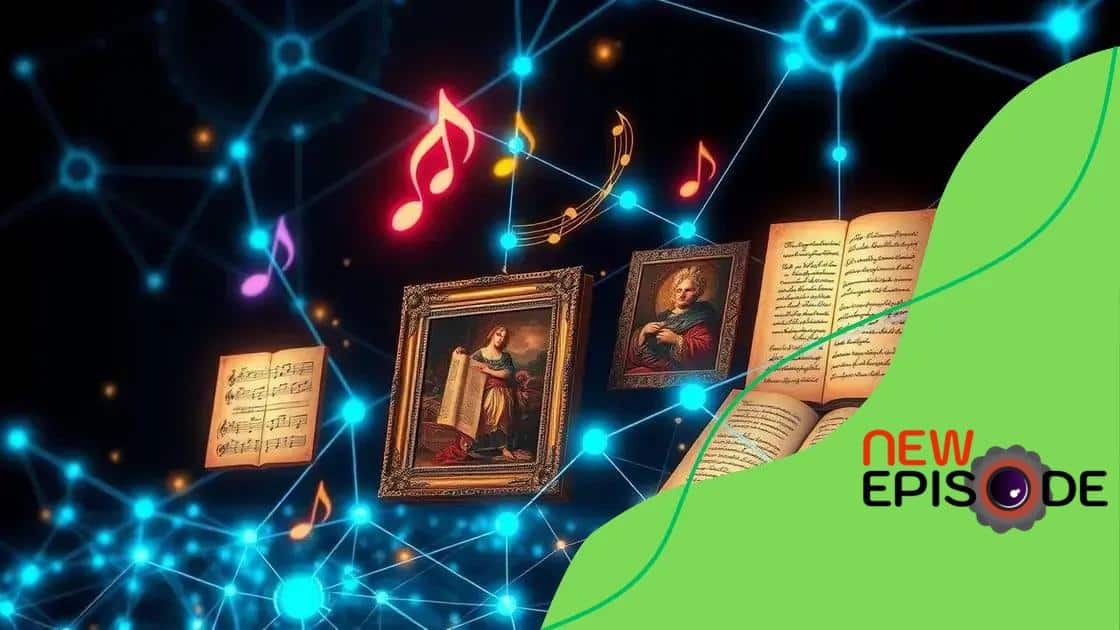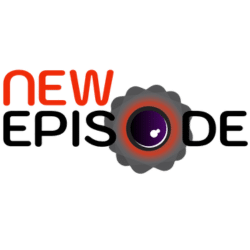The growing use of blockchain in intellectual property

The growing use of blockchain in intellectual property enhances copyright protection through transparent and immutable records, automates licensing with smart contracts, and introduces innovative applications that empower creators.
The growing use of blockchain in intellectual property is reshaping the landscape for creators and inventors. Have you ever wondered how this technology could safeguard your creative works? In this article, we delve into its implications.
Understanding blockchain technology
Understanding blockchain technology is essential for grasping its impact on various sectors, especially in creative industries. By breaking down this complex concept, we can appreciate how blockchain reshapes traditional systems.
At its core, blockchain is a decentralized digital ledger that records transactions across multiple computers. This means that no single entity controls it, making it secure and transparent. Imagine a public notebook where everyone can see entries but can’t alter past ones. This is the essence of blockchain.
Key Characteristics of Blockchain
Here are some defining features that make blockchain unique:
- Decentralization: This eliminates the need for intermediaries.
- Transparency: All transactions are visible to participants.
- Security: Data is encrypted and linked, providing a high level of protection.
- Immutability: Once data is added, it cannot be changed without consensus.
These characteristics foster trust in digital transactions, which is crucial for areas like intellectual property. Consider how artists and creators often struggle to prove ownership of their works. With blockchain, every time a piece of artwork is created or sold, a transaction is recorded securely. This public record provides undeniable proof of ownership and transaction history.
How Blockchain Works
Understanding how blockchain works involves recognizing its components. Each transaction is organized into a block, and these blocks are connected to form a chain. When a new transaction occurs, it must be validated by network participants, a process known as mining. Once verified, the transaction is added to the chain, creating a permanent record.
In the realm of intellectual property, this technology enables creators to timestamp their works. Through blockchain, they can easily demonstrate when they created something and who owns it at any given time, reducing disputes over copyright claims.
Additionally, the smart contracts feature within blockchain allows automated agreements without the need for middlemen. This innovation could revolutionize how contracts are created and executed in the creative fields, ensuring that terms are honored and payments are made instantly.
Thus, grasping blockchain technology is not just about understanding a buzzword; it’s about recognizing its potential to transform industries and protect creators’ rights effectively.
Impact of blockchain on copyright laws
The impact of blockchain on copyright laws is significant and far-reaching. As the digital landscape evolves, traditional copyright systems often struggle to keep pace. Blockchain technology offers new solutions to age-old problems, particularly in protecting the rights of creators.
One of the main advantages of blockchain is its ability to provide a transparent and immutable record of ownership. This means that every time a creative work is produced or shared, a transaction is recorded on the blockchain. This record serves as a digital certificate of authenticity, making it easier for authors, artists, and other creators to prove ownership.
Advantages of Blockchain in Copyright
Here are some specific benefits that blockchain brings to copyright laws:
- Enhanced protection: Creators can secure their work more effectively against unauthorized use.
- Automated licensing: Smart contracts enable automatic execution of licensing agreements.
- Global reach: Blockchain operates across borders, simplifying international copyright issues.
- Improved revenue tracking: Insights into how and when works are used help creators get fair compensation.
With these features, blockchain is reshaping how copyright operates. For instance, instead of lengthy legal battles over ownership, creators can rely on the transparent nature of blockchain to settle disputes more efficiently.
Challenges Ahead
Despite its promise, integrating blockchain into existing copyright systems is not without challenges. Legal frameworks in many countries are still catching up with technology. For instance, defining what constitutes a valid digital signature under current copyright law can be complicated. Additionally, copyright laws vary greatly across jurisdictions, which can create confusion regarding enforcement.
Another issue is the potential for misuse of the technology. Although blockchain is secure, it is not immune to content theft or misrepresentation. Educating creators about how to use blockchain effectively and securely is essential as this technology evolves. Therefore, while blockchain has the potential to revolutionize copyright laws, understanding its complexities and navigating existing legal frameworks will be crucial for successful implementation.
Real-world applications of blockchain in IP

Real-world applications of blockchain in intellectual property (IP) are transforming how creators manage and protect their works. This innovative technology offers practical solutions to age-old problems faced by artists, musicians, and other creators.
One prominent application is in the music industry. Many musicians struggle with ensuring they receive fair compensation for their work. By using blockchain, artists can create a decentralized ledger of their music. This allows for transparent tracking of every play and purchase, ensuring they get paid fairly. Platforms like Audius demonstrate this principle by enabling artists to share their music while maintaining control over distribution and revenue.
Examples of Blockchain in IP
Here are several noteworthy applications of blockchain in the field of intellectual property:
- Art Authentication: Artists can register their art on a blockchain, providing proof of authenticity and ownership. This reduces the risk of forgeries.
- Patent Management: Companies can use blockchain to track patents and related IP rights, streamlining the processes of licensing and enforcement.
- Publishing Rights: Writers can publish their works on blockchain platforms, allowing them to retain ownership and receive payments directly from readers.
- Fashion Industry: Brands can use blockchain to track the provenance of materials, ensuring ethical sourcing and authenticity of their products.
These applications demonstrate how blockchain can create new avenues for creators to monetize their works, reducing reliance on intermediaries. This shift enables direct relationships between creators and their audiences, fostering a more equitable system.
Challenges in Implementation
However, while the potential of blockchain in IP is vast, there are hurdles to overcome. Adoption requires a shift in mindset from traditional practices to new, innovative frameworks. Additionally, there is often a lack of understanding of blockchain technology among creators. Educating artists about how to leverage this technology is crucial for widespread acceptance.
Regulatory issues also pose a challenge; existing laws may not fully encompass blockchain transactions. Consequently, as the technology advances, lawmakers must keep pace to ensure legal protection for creators.
In summary, the real-world applications of blockchain in IP are reshaping the landscape of creative industries, offering innovative solutions for ownership rights and compensation.
Challenges of implementing blockchain in IP
Challenges of implementing blockchain in intellectual property (IP) are numerous and complex. Although this technology offers promising solutions, several obstacles hinder its widespread adoption.
One of the primary challenges is the lack of understanding of blockchain among creators and industry professionals. Many individuals are still unfamiliar with how blockchain works and how it can benefit their IP rights. This knowledge gap can lead to hesitation in adopting blockchain solutions.
Regulatory Issues
Another significant barrier involves regulatory frameworks. Current copyright laws are often not designed to accommodate blockchain technology. As a result, creators may face uncertainty about how to use blockchain effectively within existing legal structures. For instance, questions about the legality of digital signatures or the enforceability of smart contracts remain largely unresolved.
Furthermore, jurisdictional challenges arise with blockchain’s global nature. Different countries have varying laws regarding copyright and digital transactions, which makes enforcement complicated. This lack of a unified global standard can create confusion for creators who operate internationally.
Technical Limitations
Additionally, there are technical limitations associated with implementing blockchain. Many existing platforms are not user-friendly for those without technical expertise. This poses a challenge for artists and small creators who may not have the resources to navigate complex blockchain systems.
Scalability is another issue. As more users join a blockchain network, transaction speeds can decrease, leading to delays. Such delays could hinder real-time applications, which are often crucial in creative industries.
There are also concerns surrounding security and privacy. Although blockchain is considered secure, it is not infallible. High-profile hacks and data breaches have raised alarms about the safety of using blockchain to manage sensitive IP information. Therefore, ongoing dialogue regarding security measures is critical as creators look to adopt this technology.
In summary, while blockchain has the potential to significantly improve IP management, these challenges must be addressed to facilitate its effective implementation and ensure creators can benefit from its advantages.
Future trends in blockchain and intellectual property
Future trends in blockchain and intellectual property are shaping a new landscape for creators and innovators. As this technology evolves, its applications in IP management are becoming more pronounced and impactful.
One prominent trend is the rise of decentralized applications (dApps) that use blockchain to simplify and enhance the way IP rights are managed. These applications enable users to have greater control over their creations while eliminating the need for intermediaries. As dApps gain popularity, we can expect to see more creators embracing them for licensing and payment purposes.
Increased Adoption of Smart Contracts
Another significant trend is the increasing use of smart contracts. These are self-executing contracts with the terms directly written into code. They automate various processes, ensuring that creators receive payments automatically once certain conditions are met. This can be especially beneficial in the music and film industries, where the distribution of royalties is often complex and time-consuming.
Smart contracts enhance transparency, allowing creators to track how their works are used. As this technology develops, more industries are likely to adopt smart contracts to streamline operations and improve trust between parties involved.
Integration with Artificial Intelligence
The integration of artificial intelligence (AI) with blockchain is another exciting trend on the horizon. AI can help analyze vast amounts of data related to ownership and usage patterns. This analysis can provide valuable insights, helping creators understand how their works are consumed, which in turn helps them optimize their strategies for marketing and distribution.
Furthermore, AI-driven tools can assist in identifying potential copyright infringements more efficiently, providing creators with real-time notifications and support to protect their rights more effectively.
Focus on Education and Awareness
As blockchain technology continues to develop, there will be a growing emphasis on education and awareness among creators and industry professionals. Workshops and online resources will become increasingly important as individuals seek to understand how blockchain can be integrated into their workflows and how it can protect their intellectual property.
A robust understanding of blockchain will empower creators to take full advantage of its benefits, leading to more widespread adoption within creative industries.
Overall, the future of blockchain in intellectual property is promising. As trends such as dApps, smart contracts, AI integration, and a focus on education emerge, they will foster a more efficient and equitable landscape for creators around the world.
FAQ – Frequently Asked Questions about Blockchain in Intellectual Property
How does blockchain improve copyright protection?
Blockchain provides a transparent and immutable record of ownership, making it easier for creators to prove their rights.
What are smart contracts in the context of IP?
Smart contracts are self-executing agreements that automate licensing and payment processes, ensuring creators are paid fairly.
What challenges exist when implementing blockchain in IP?
Challenges include regulatory issues, technical limitations, and a lack of understanding among creators about the technology.
What future trends should creators be aware of?
Creators should watch for the rise of decentralized applications, increased use of AI, and a focus on education around blockchain technology.






